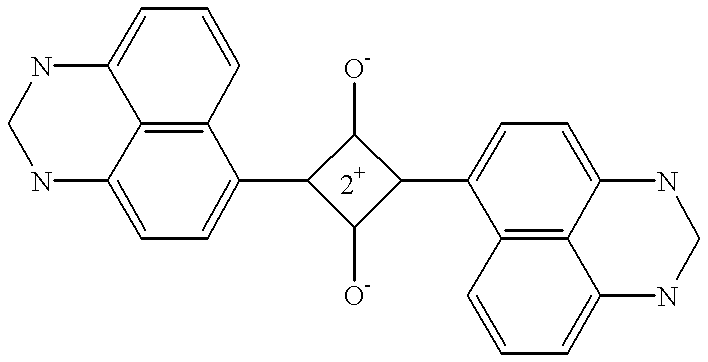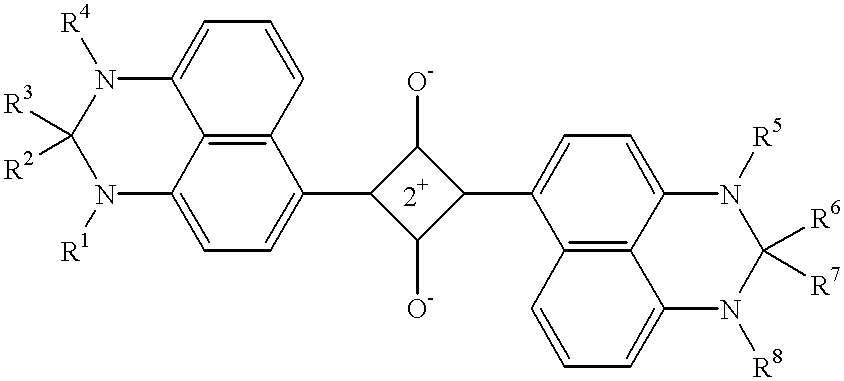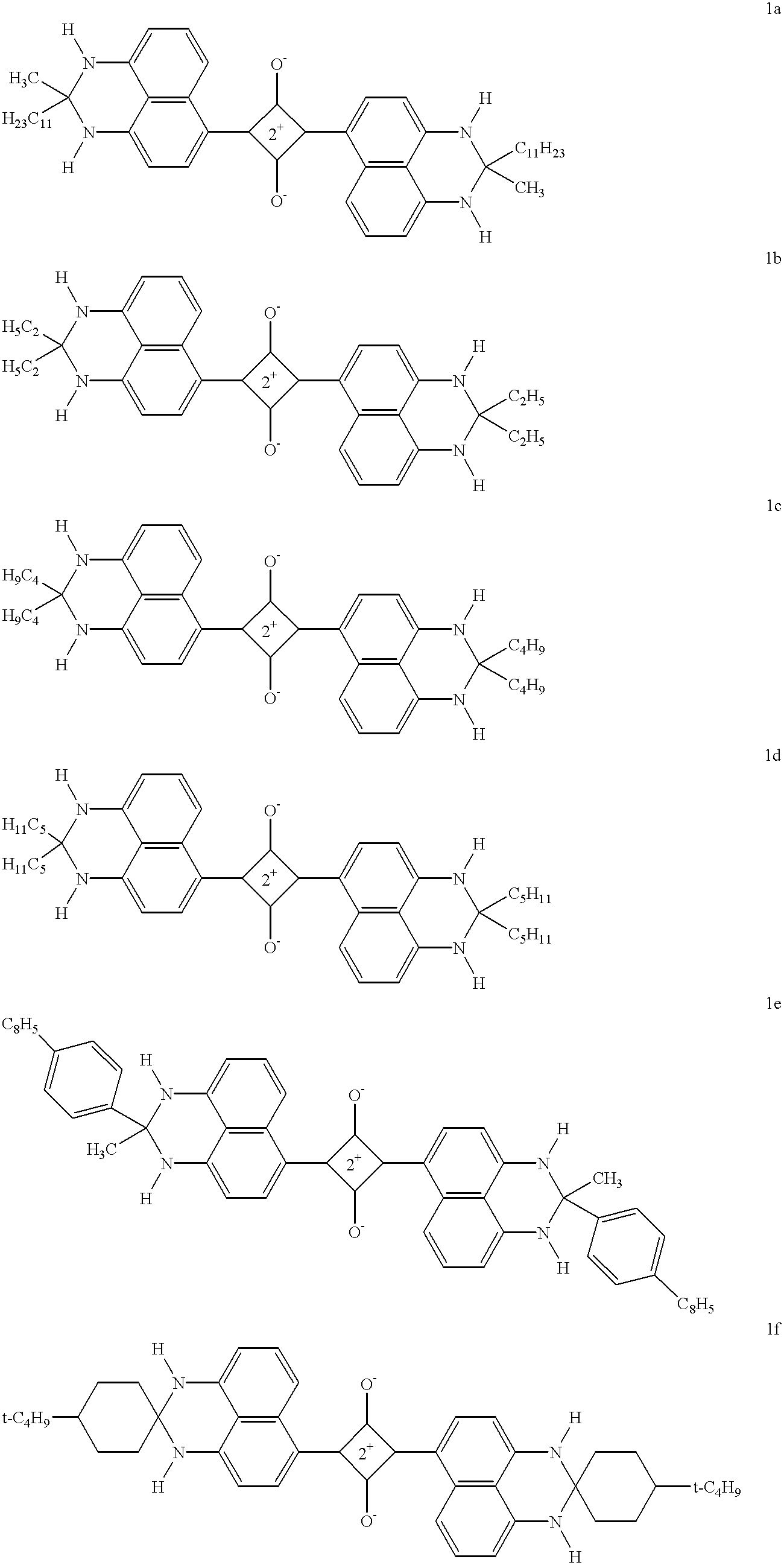Stable antihalation materials for photographic and photothermographic elements
- Summary
- Abstract
- Description
- Claims
- Application Information
AI Technical Summary
Problems solved by technology
Method used
Image
Examples
example 1
The deleterious nature of amines to the pot-life of bis(dihydroperimidine) squarylium dyes was demonstrated by preparing solutions of Dye 1a in 2-butanone, with and without added amine. Without added amine, 93% of the absorbance of the dye was retained after 22 hr. When 0.04% triethyl amine was added, only 42% of the absorbance of the dye was retained after 23 hr. When, 0.04% n-hexyl amine was added, essentially all of the absorbance of the dye had disappeared after 22.5 hr.
As will be shown below, addition of organic carboxylic acids having a pKa less than or equal to about 2.9 are very effective in reducing this effect.
example 2
Samples 2-1 to 2-8 were prepared with a dihydroperimidine squarylium dye incorporated into an antihalation coating. Each solution contained the following materials.
One half of each of the solutions made using the dyes and acid shown in the table were coated on a 7 mil clear poly(ethylene terephthalate) support at 3 mil wet thickness and dried for 3 minutes at 180.degree. F. The other half of the solutions were stored for 24 hours at room temperature and coated as above.
Absorbance was measured using a Hewlett Packard Diode array spectrophotometer.
The coatings were tested immediately after coating and drying for absorbance. The coatings were then stored for 24 hours at 70.degree. F. / 20%RH and tested for conductivity properties.
The results, shown below, demonstrate that samples having no acid (i.e., Samples 2-2 and 2-7) lost more absorbance than corresponding samples containing acid in the antihalation solution.
Resistivity of each coating was measured on the Keithly 6105 surface resist...
example 3
The following example, demonstrates that addition of acid retards bleaching of the antihatation dye and prolongs pot-life of the antihalation coating solution.
Dye 4a (12 mg) and the acid given below were dissolved in 9.00 g of a 1.0% solution of Antistat-1 in 2-butanone. 1 mL of this solution was diluted to 250 mL with 2-butanone and the absorbance at 806 nm (.lambda.max) measured. The remainder of the undiluted solution was kept at room temperature. After 24 hr, 1 mL of this solution was again diluted to 250 mL with 2-butanone and the absorbance again measured.
As shown below, all three acid containing solutions retained their absorbance better than corresponding control solutions containing no acid. The strongest of these acids (TCA) performed best, losing only 2% of its absorbance after 24 hr. The data below also demonstrates that while benzoic acid (BA) and acetic acid (AA) provide some protection against antihalation layer bleaching, acids with pKa.ltoreq.2.9 have the best effec...
PUM
 Login to View More
Login to View More Abstract
Description
Claims
Application Information
 Login to View More
Login to View More - R&D
- Intellectual Property
- Life Sciences
- Materials
- Tech Scout
- Unparalleled Data Quality
- Higher Quality Content
- 60% Fewer Hallucinations
Browse by: Latest US Patents, China's latest patents, Technical Efficacy Thesaurus, Application Domain, Technology Topic, Popular Technical Reports.
© 2025 PatSnap. All rights reserved.Legal|Privacy policy|Modern Slavery Act Transparency Statement|Sitemap|About US| Contact US: help@patsnap.com



